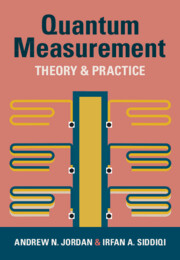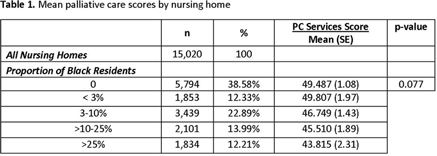123 results

Quantum Measurement
- Theory and Practice
- Coming soon
-
- Expected online publication date:
- April 2024
- Print publication:
- 15 February 2024
-
- Book
- Export citation
Exploring Arbitrariness Objections to Time Biases
-
- Journal:
- Journal of the American Philosophical Association , First View
- Published online by Cambridge University Press:
- 07 March 2024, pp. 1-27
-
- Article
-
- You have access
- Open access
- HTML
- Export citation
White kidney bean extract as a nutraceutical: effects on gut microbiota, alpha-amylase inhibition, and user experiences
-
- Journal:
- Gut Microbiome / Volume 4 / 2023
- Published online by Cambridge University Press:
- 01 June 2023, e8
-
- Article
-
- You have access
- Open access
- HTML
- Export citation
Oral pyrroloquinoline quinone (PQQ) during pregnancy increases cardiomyocyte endowment in spontaneous IUGR guinea pigs
-
- Journal:
- Journal of Developmental Origins of Health and Disease / Volume 14 / Issue 3 / June 2023
- Published online by Cambridge University Press:
- 02 March 2023, pp. 321-324
-
- Article
- Export citation
Overview of the Maser Monitoring Organisation
-
- Journal:
- Proceedings of the International Astronomical Union / Volume 18 / Issue S380 / December 2022
- Published online by Cambridge University Press:
- 07 February 2024, pp. 443-451
- Print publication:
- December 2022
-
- Article
- Export citation
Masers in accretion burst sources
-
- Journal:
- Proceedings of the International Astronomical Union / Volume 18 / Issue S380 / December 2022
- Published online by Cambridge University Press:
- 07 February 2024, pp. 152-158
- Print publication:
- December 2022
-
- Article
- Export citation
STEM Imaging, Monochromated EELS, and Theory of Natural and Artificial Superlattices
-
- Journal:
- Microscopy and Microanalysis / Volume 28 / Issue S1 / August 2022
- Published online by Cambridge University Press:
- 22 July 2022, pp. 1682-1683
- Print publication:
- August 2022
-
- Article
-
- You have access
- Export citation
Characterisation of age and polarity at onset in bipolar disorder
-
- Journal:
- The British Journal of Psychiatry / Volume 219 / Issue 6 / December 2021
- Published online by Cambridge University Press:
- 25 August 2021, pp. 659-669
- Print publication:
- December 2021
-
- Article
-
- You have access
- Open access
- HTML
- Export citation
Nanoscale STEM/EELS and Theory Investigations of Vibronic Properties of Superlattices
-
- Journal:
- Microscopy and Microanalysis / Volume 27 / Issue S1 / August 2021
- Published online by Cambridge University Press:
- 30 July 2021, pp. 112-113
- Print publication:
- August 2021
-
- Article
-
- You have access
- Export citation
Infection Hospitalization Trends Among US Home Healthcare Patients, 2013–2018
-
- Journal:
- Antimicrobial Stewardship & Healthcare Epidemiology / Volume 1 / Issue S1 / July 2021
- Published online by Cambridge University Press:
- 29 July 2021, pp. s1-s2
-
- Article
-
- You have access
- Open access
- Export citation
Racial Differences in Infection Management and Palliative Care at End-of-Life in Nursing Homes Nationwide
-
- Journal:
- Antimicrobial Stewardship & Healthcare Epidemiology / Volume 1 / Issue S1 / July 2021
- Published online by Cambridge University Press:
- 29 July 2021, p. s69
-
- Article
-
- You have access
- Open access
- Export citation
Infection trends in home health care, 2013–2018
-
- Journal:
- Infection Control & Hospital Epidemiology / Volume 42 / Issue 11 / November 2021
- Published online by Cambridge University Press:
- 21 June 2021, pp. 1388-1390
- Print publication:
- November 2021
-
- Article
-
- You have access
- Open access
- HTML
- Export citation
Remnant radio galaxies discovered in a multi-frequency survey
- Part of
-
- Journal:
- Publications of the Astronomical Society of Australia / Volume 38 / 2021
- Published online by Cambridge University Press:
- 09 February 2021, e008
-
- Article
-
- You have access
- HTML
- Export citation
Novel method of calculating adjusted antibiotic use by microbiological burden
-
- Journal:
- Infection Control & Hospital Epidemiology / Volume 42 / Issue 6 / June 2021
- Published online by Cambridge University Press:
- 28 January 2021, pp. 688-693
- Print publication:
- June 2021
-
- Article
- Export citation
Unexpected circular radio objects at high Galactic latitude
- Part of
-
- Journal:
- Publications of the Astronomical Society of Australia / Volume 38 / 2021
- Published online by Cambridge University Press:
- 18 January 2021, e003
-
- Article
-
- You have access
- HTML
- Export citation
Genetic architecture of reciprocal social behavior in toddlers: Implications for heterogeneity in the early origins of autism spectrum disorder
-
- Journal:
- Development and Psychopathology / Volume 32 / Issue 4 / October 2020
- Published online by Cambridge University Press:
- 09 November 2020, pp. 1190-1205
-
- Article
- Export citation
7 - Voluntary Action
- from Part II - Designing Policy Durability
-
- Book:
- Durable by Design?
- Published online:
- 24 September 2020
- Print publication:
- 03 September 2020, pp 158-184
-
- Chapter
- Export citation
Tables
-
- Book:
- Durable by Design?
- Published online:
- 24 September 2020
- Print publication:
- 03 September 2020, pp x-x
-
- Chapter
- Export citation
8 - Climate Policy Feedbacks
- from Part III - Climate Policy
-
- Book:
- Durable by Design?
- Published online:
- 24 September 2020
- Print publication:
- 03 September 2020, pp 187-211
-
- Chapter
- Export citation
Part III - Climate Policy
-
- Book:
- Durable by Design?
- Published online:
- 24 September 2020
- Print publication:
- 03 September 2020, pp 185-244
-
- Chapter
- Export citation








